
Gazcue: The Historic Heartbeat of Santo Domingo
Discover Gazcue: A historic neighborhood in Santo Domingo, where colonial charm meets modern culture, offering rich history, vibrant arts, and diverse dining experiences.
Nestled in the vibrant cityscape of Santo Domingo, Gazcue stands as one of the city's most charming and historic neighborhoods. Known for its tree-lined streets and colonial architecture, Gazcue offers an authentic glimpse into the rich history and culture of the Dominican Republic. As you wander through its picturesque avenues, you'll encounter an array of well-preserved buildings from the early 20th century, each telling a story of the city's past. Gazcue is home to a variety of cultural landmarks, including the National Theatre and the Museum of Modern Art. These institutions provide a deep dive into the local arts scene, showcasing everything from traditional Dominican music to contemporary art installations. The neighborhood's central location also makes it the perfect base for exploring other areas of Santo Domingo, with many attractions within walking distance or a short ride away. For food enthusiasts, Gazcue offers a delightful culinary journey. The neighborhood is dotted with quaint cafes, traditional Dominican eateries, and upscale restaurants, ensuring that every palate is satisfied. Whether you're craving a hearty plate of mangu or a sophisticated seafood dish, Gazcue's diverse dining options will not disappoint. In the evenings, the neighborhood comes alive with vibrant nightlife, from cozy bars to lively nightclubs, providing plenty of opportunities to experience the local culture after dark. Gazcue's blend of historical charm, cultural richness, and modern amenities makes it a must-visit for any tourist in Santo Domingo. Whether you're here for a day or planning a longer stay, this neighborhood promises an unforgettable experience that captures the essence of the Dominican Republic.
Local tips in Gazcue
- Visit the National Theatre for a taste of Dominican performing arts.
- Take a leisurely stroll along the tree-lined streets to admire the colonial architecture.
- Try local dishes like mangu at one of the traditional Dominican eateries.
- Explore the Museum of Modern Art for an insight into contemporary Dominican art.
- Stay in a boutique hotel to fully immerse yourself in the neighborhood's historic ambiance.
Gazcue: The Historic Heartbeat of Santo Domingo
Nestled in the vibrant cityscape of Santo Domingo, Gazcue stands as one of the city's most charming and historic neighborhoods. Known for its tree-lined streets and colonial architecture, Gazcue offers an authentic glimpse into the rich history and culture of the Dominican Republic. As you wander through its picturesque avenues, you'll encounter an array of well-preserved buildings from the early 20th century, each telling a story of the city's past. Gazcue is home to a variety of cultural landmarks, including the National Theatre and the Museum of Modern Art. These institutions provide a deep dive into the local arts scene, showcasing everything from traditional Dominican music to contemporary art installations. The neighborhood's central location also makes it the perfect base for exploring other areas of Santo Domingo, with many attractions within walking distance or a short ride away. For food enthusiasts, Gazcue offers a delightful culinary journey. The neighborhood is dotted with quaint cafes, traditional Dominican eateries, and upscale restaurants, ensuring that every palate is satisfied. Whether you're craving a hearty plate of mangu or a sophisticated seafood dish, Gazcue's diverse dining options will not disappoint. In the evenings, the neighborhood comes alive with vibrant nightlife, from cozy bars to lively nightclubs, providing plenty of opportunities to experience the local culture after dark. Gazcue's blend of historical charm, cultural richness, and modern amenities makes it a must-visit for any tourist in Santo Domingo. Whether you're here for a day or planning a longer stay, this neighborhood promises an unforgettable experience that captures the essence of the Dominican Republic.
Iconic landmarks you can’t miss
Independence Park
Discover the lush landscapes and historical monuments of Independence Park, a serene urban oasis in the heart of Santo Domingo.

Plaza Juan Barón
Explore the vibrant Plaza Juan Barón in Santo Domingo, a cultural park filled with local art, lively entertainment, and delicious Dominican cuisine.

National Museum of Natural History
Discover the rich biodiversity and natural heritage at the National Museum of Natural History, a must-visit for nature and science enthusiasts.

Plaza De La Cultura
Discover the vibrant cultural scene at Plaza De La Cultura in Santo Domingo, featuring museums, theaters, and stunning outdoor spaces.

Museum of the Dominican Man
Explore the rich history and vibrant culture of the Dominican Republic at the Museum of the Dominican Man in Santo Domingo.
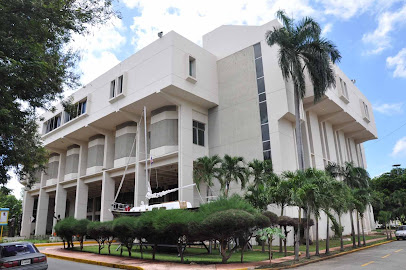
Santo Domingo Obelisk
Explore the Santo Domingo Obelisk, a historical landmark that beautifully encapsulates the spirit of the Dominican Republic amidst scenic park settings.

Altar de la Patria
Discover the Altar de la Patria in Santo Domingo – a historical museum and peaceful tribute to the Dominican Republic's heroes of independence.

Museo de Historia y Geografia
Explore the rich history and geography of the Dominican Republic at the Museo de Historia y Geografía, a cultural gem in Santo Domingo.

Plaza Patriótica a los Caídos de la Revolución de Abril de 1965
Immerse yourself in the rich history of the Dominican Republic at the Plaza Patriótica a los Caídos de la Revolución de Abril de 1965, a serene memorial honoring the nation's heroes.

Monumento al Coronel Fernández Domínguez y a los mártires de 1965
Explore the Monumento al Coronel Fernández Domínguez, a historic landmark in Santo Domingo honoring the courage of the martyrs of 1965.

Unmissable attractions to see
National Museum of Natural History
Explore the rich biodiversity and geological history of the Dominican Republic at the National Museum of Natural History in Santo Domingo.

Plaza De La Cultura
Experience the rich cultural tapestry of Santo Domingo at Plaza De La Cultura, a vibrant hub for art, history, and local festivities.
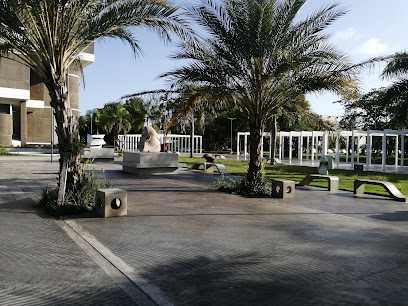
Museo de Historia y Geografia
Discover the captivating history and geography of the Dominican Republic at Museo de Historia y Geografia, a must-see attraction in Santo Domingo.

Essential places to dine
Adrian Tropical
Experience authentic Dominican cuisine with stunning views at Adrian Tropical in Santo Domingo - a culinary gem waiting to be explored.

Villar Hermanos
Discover the authentic flavors of Dominican cuisine at Villar Hermanos – a must-visit restaurant and bakery in Santo Domingo.

El Conuco
Discover authentic Dominican cuisine at El Conuco in Santo Domingo, where every dish tells a story of culture and tradition.

El Gallego
Experience authentic Spanish cuisine at El Gallego in Santo Domingo - where every dish tells a story.

Restaurante Manolo
Experience authentic Dominican cuisine at Restaurante Manolo in Santo Domingo - where every meal tells a story.

Rico Hot Dog
Discover Santo Domingo's culinary delight at Rico Hot Dog - where every bite tells a story of flavor and tradition.

Luna Tapas Bar & Restaurant
Experience exquisite tapas and vibrant cocktails at Luna Tapas Bar & Restaurant in Santo Domingo - where flavor meets culture.

El Rinconcito Del Chef
Experience authentic Dominican flavors at El Rinconcito Del Chef in Santo Domingo – where every dish tells a story.

El Tizon
Discover authentic Dominican cuisine at El Tizon in Gazcue, where delightful dishes meet an inviting atmosphere.

Restaurante A La Mesa
Experience authentic Dominican cuisine at Restaurante A La Mesa in Santo Domingo's Gazcue neighborhood – a culinary treasure not to be missed.
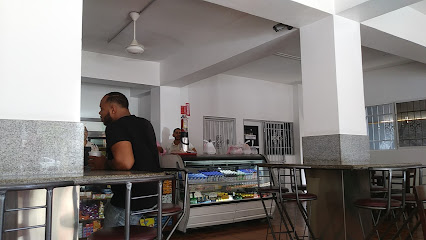
Markets, malls and hidden boutiques
Ágora Mall
Experience the ultimate shopping and dining adventure at Ágora Mall in the heart of Santo Domingo, where style meets entertainment.

Sambil Santo Domingo
Experience shopping, dining, and entertainment all in one place at Sambil Santo Domingo, your ultimate shopping mall destination.

Centro Comercial Galería 360
Explore shopping, dining, and entertainment at Centro Comercial Galería 360, a premier destination in Santo Domingo for tourists seeking local culture.

BlueMall Santo Domingo
Explore the luxurious BlueMall Santo Domingo, where shopping meets fine dining and entertainment in a vibrant urban setting.

Bella Vista Mall
Discover the ultimate shopping experience at Bella Vista Mall in Santo Domingo, where local charm meets international brands and delightful dining.

Plaza jardines de gazcue
Discover the lively Plaza Jardines de Gazcue: a premier shopping destination in Santo Domingo, offering diverse stores and delectable dining options.
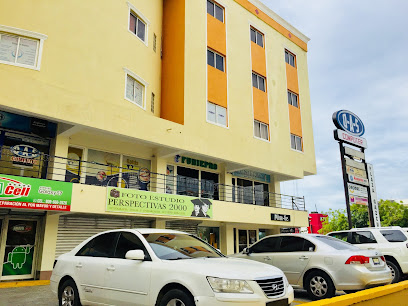
La Tienda de la Fábrica Gazcue
Explore La Tienda de la Fábrica Gazcue for a unique shopping experience featuring local crafts, delicious delicacies, and authentic souvenirs in Santo Domingo.

La mansión del arte RD
Discover the vibrant fusion of art, dining, and shopping at La Mansión del Arte RD in Santo Domingo, a must-visit cultural hub.

The Gift Store
Discover unique souvenirs and local crafts at The Gift Store in Santo Domingo, where every item reflects the vibrant Dominican culture.

Gift Shop Mercado Artesanal
Explore Mercado Artesanal in Santo Domingo for handcrafted treasures and authentic Dominican souvenirs that capture the island's vibrant culture.

Essential bars & hidden hideouts
Merengue Bar
Discover Merengue Bar in Santo Domingo - a vibrant nightlife hub where music, culture, and cocktails create unforgettable experiences.

El Cafecito
Experience the vibrant nightlife at El Cafecito, Santo Domingo's premier karaoke bar, where every night is a celebration of music and fun.
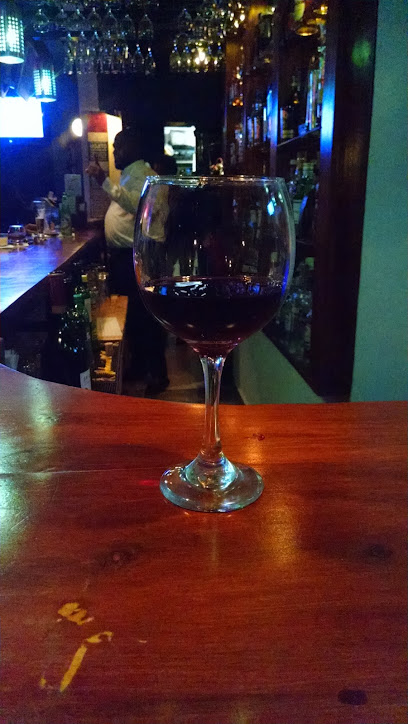
Bar De Alexis
Experience the vibrant nightlife of Santo Domingo at Bar De Alexis, where delicious drinks and local culture come together in a lively atmosphere.

Fanático, Gazcue
Discover the vibrant nightlife of Santo Domingo at Fanático, Gazcue, where exceptional cocktails and a lively atmosphere await you.

Los de Anoche Bar
Discover the vibrant flavors and lively atmosphere of Los de Anoche Bar, a must-visit grill in Santo Domingo's Gazcue neighborhood.

Coppa Bar
Experience the vibrant nightlife at Coppa Bar in Santo Domingo, where great drinks and a lively atmosphere come together for an unforgettable evening.

LIRIX Bar & Lounge
LIRIX Bar & Lounge: A vibrant nightlife hotspot in Santo Domingo, offering cocktails, music, and an energetic atmosphere for all.

Level 1 Bar & Lounge
Discover exquisite cocktails and a vibrant atmosphere at Level 1 Bar & Lounge in the heart of Santo Domingo's Gazcue neighborhood.

Mint
Experience the vibrant nightlife of Santo Domingo at Mint, where cocktails, music, and stunning sea views come together for an unforgettable evening.

Revel
Experience the vibrant nightlife at Revel, Santo Domingo's premier bar offering eclectic drinks and lively entertainment.

Local Phrases
-
- HelloHola
[oh-lah] - GoodbyeAdiós
[ah-dee-ohs] - YesSí
[see] - NoNo
[noh] - Please/You're welcomePor favor/De nada
[por fah-vor/de nah-dah] - Thank youGracias
[grah-see-ahs] - Excuse me/SorryPerdón/Lo siento
[pair-dohn/loh see-ehn-toh] - How are you?¿Cómo estás?
[koh-moh ehs-tahs] - Fine. And you?Bien. ¿Y tú?
[bee-ehn. ee too] - Do you speak English?¿Hablas inglés?
[ah-blahs een-glehs] - I don't understandNo entiendo
[noh ehn-tyen-doh]
- HelloHola
-
- I'd like to see the menu, pleaseMe gustaría ver el menú, por favor
[meh goo-stah-ree-ah behr ehl meh-noo, por fah-vor] - I don't eat meatNo como carne
[noh koh-moh kahr-neh] - Cheers!¡Salud!
[sah-lood] - I would like to pay, pleaseMe gustaría pagar, por favor
[meh goo-stah-ree-ah pah-gahr, por fah-vor]
- I'd like to see the menu, pleaseMe gustaría ver el menú, por favor
-
- Help!¡Ayuda!
[ah-yoo-dah] - Go away!¡Vete!
[veh-teh] - Call the Police!¡Llama a la policía!
[yah-mah ah lah poh-lee-see-ah] - Call a doctor!¡Llama a un doctor!
[yah-mah ah oon dohk-tohr] - I'm lostEstoy perdido
[ehs-toy pair-dee-doh] - I'm illEstoy enfermo
[ehs-toy ehn-fehr-moh]
- Help!¡Ayuda!
-
- I'd like to buy...Me gustaría comprar...
[meh goo-stah-ree-ah kohm-prahr] - I'm just lookingSolo estoy mirando
[soh-loh ehs-toy mee-rahndoh] - How much is it?¿Cuánto cuesta?
[kwan-toh kwehs-tah] - That's too expensiveEso es muy caro
[eh-soh ehs moo-ee kahr-oh] - Can you lower the price?¿Puede bajar el precio?
[pweh-deh bah-hahr ehl pree-syoh]
- I'd like to buy...Me gustaría comprar...
-
- What time is it?¿Qué hora es?
[keh oh-rah ehs] - It's one o'clockEs la una en punto
[ehs lah oo-nah ehn poon-toh] - Half past (10)Y media (10)
[ee meh-dee-ah (d'yeez)] - MorningMañana
[mah-nyah-nah] - AfternoonTarde
[tahr-deh] - EveningNoche
[noh-cheh] - YesterdayAyer
[ah-yehr] - TodayHoy
[oy] - TomorrowMañana
[mah-nyah-nah] - 1Uno
[oo-noh] - 2Dos
[dohs] - 3Tres
[trehs] - 4Cuatro
[kwah-troh] - 5Cinco
[seen-koh] - 6Seis
[sehs] - 7Siete
[syeh-teh] - 8Ocho
[oh-choh] - 9Nueve
[nweh-veh] - 10Diez
[dyehz]
- What time is it?¿Qué hora es?
-
- Where's a/the...?¿Dónde está...?
[dohn-deh ehs-tah] - What's the address?¿Cuál es la dirección?
[kwal ehs lah dee-rehk-syohn] - Can you show me (on the map)?¿Puedes mostrarme (en el mapa)?
[pweh-dehs mohs-trahr-meh (ehn ehl mah-pah)] - When's the next (bus)?¿Cuándo es el próximo (autobús)?
[kwan-doh ehs ehl proh-ksee-moh (ow-toh-boos)] - A ticket (to ....)Un boleto (a ....)
[oon boh-leh-toh (ah)]
- Where's a/the...?¿Dónde está...?
History of Gazcue
-
Gazcue, established in the late 19th century, is one of the oldest neighborhoods in Santo Domingo. Its name is derived from the indigenous Taíno word for the area, reflecting the rich pre-colonial history. The neighborhood was developed as an extension of the colonial city, where affluent families built grand residences, contributing to the architectural diversity of Santo Domingo.
-
Gazcue became a cultural hub in Santo Domingo, especially during the early 20th century. The influx of European immigrants, particularly from Spain and France, introduced new cultural influences that blended with the local Dominican traditions. This fusion is evident in the neighborhood's architecture, cuisine, and social customs, making Gazcue a vibrant tapestry of cultural exchange.
-
Throughout the 20th century, Gazcue played a crucial role in the political landscape of the Dominican Republic. It was home to several key political figures and has hosted numerous political events and demonstrations. The area's proximity to governmental institutions made it a focal point for civic engagement and activism, particularly during the Trujillo regime and the subsequent democratic transition.
-
Gazcue is renowned for its eclectic architecture, which includes neoclassical, Art Deco, and modernist styles. The neighborhood features several historic buildings, such as the Casa de la Cultura and the Palacio de Bellas Artes, which showcase the artistic and cultural evolution of Santo Domingo. Many structures are protected under historical preservation laws, highlighting the importance of maintaining the neighborhood's architectural identity.
-
Today, Gazcue is a bustling neighborhood that retains its historical charm while adapting to modern life. The area is known for its tree-lined streets, quaint cafes, and cultural institutions, including galleries and theaters. It continues to be a center for arts and education, reflecting the ongoing legacy of its historical significance and cultural heritage within Santo Domingo.
Gazcue Essentials
-
Gazcue is centrally located in Santo Domingo, making it easily accessible from various neighborhoods. From the Colonial Zone, you can take a short taxi ride or a local bus (carro público) that runs frequently along Avenida 27 de Febrero. If coming from the airport, the best option is to take a taxi or a rideshare service directly to Gazcue, which takes about 30 minutes depending on traffic.
-
Gazcue is a walkable neighborhood, ideal for exploring its parks and historic sites on foot. Public transportation options include local buses and carro públicos that connect to other areas of the city. Taxis are readily available and can be flagged down or booked via rideshare apps. Bicycles can be rented from local shops, and there are bike lanes along some streets.
-
Gazcue is generally safe for tourists, but it’s advisable to exercise caution as in any urban area. Avoid walking alone at night, especially in less crowded streets. While most areas are safe, certain parts on the outskirts may have higher crime rates, particularly after dark. It's prudent to stay vigilant, avoid displaying valuables, and stick to well-lit, populated areas.
-
In case of an emergency, dial 911 for police, fire, or medical assistance. The nearest hospital is the Hospital Dr. Salvador B. Gautier, located just a short distance away. It's advisable to have travel insurance that covers emergencies. Pharmacies are also available throughout Gazcue for minor health concerns.
-
Fashion: Do wear light, breathable clothing due to the tropical climate, but dress modestly when visiting religious sites. Religion: Do respect local customs, especially in churches. Public Transport: Do be courteous on public transport and allow others to sit. Don’t eat or drink on buses. Greetings: Do greet locals with a smile and a simple 'Hola'. Eating & Drinking: Do try local street food but ensure it is from a clean vendor. Don’t drink tap water; opt for bottled water instead.
-
To experience Gazcue like a local, visit Parque Independencia in the evenings when families gather. Enjoy traditional Dominican dishes at local eateries, and don’t shy away from trying street food. Engage with locals who are typically friendly and eager to share their culture. If you're interested in history, visit the Museo de Historia y Geografía, which offers insights into the Dominican Republic's past.
Trending Landmarks in Gazcue
-
Independence Park
-
Plaza Juan Barón
-
National Museum of Natural History
-
Plaza De La Cultura
-
Museum of the Dominican Man
-
Santo Domingo Obelisk
-
Altar de la Patria
-
Museo de Historia y Geografia
-
Plaza Patriótica a los Caídos de la Revolución de Abril de 1965
-
Monumento al Coronel Fernández Domínguez y a los mártires de 1965
Nearby Cities to Gazcue
-
Things To Do in La Romana
-
Things To Do in Samana
-
Things To Do in Jarabacoa
-
Things To Do in Bayahibe
-
Things To Do in Punta Cana
-
Things To Do in Puerto Plata
-
Things To Do in Hinche
-
Things To Do in Petionville
-
Things To Do in Port-au-Prince
-
Things To Do in Jacmel
-
Things To Do in Rincon
-
Things To Do in Cap-Haïtien
-
Things To Do in Aguadilla
-
Things To Do in Cabo Rojo
-
Things To Do in Saint-Marc











